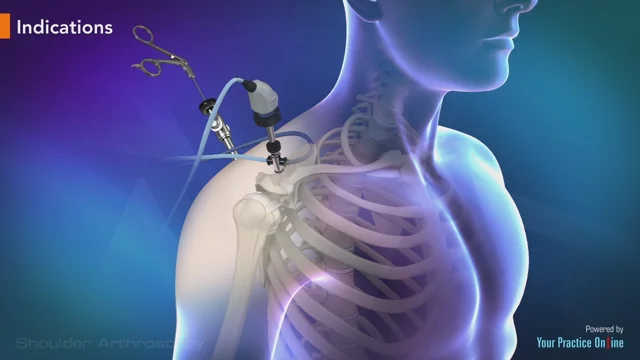
Dr. Sanjay Barik
Knee & Shoulder Surgeon
Meet Our Doctor

Dr. Sanjay Barik
Orthopedic and Joint Replacement Surgeon
Dr. Barik's Orthocare Clinic
- MBBS
- MS - Orthopaedics
Shoulder Arthroscopy In Seoni
- Home
- Quick Links
- Shoulder Arthroscopy In Seoni
Arthroscopy is a procedure that surgeons use to the inspect, diagnose, and treat problems inside a joint.The word arthroscopy comes from two Greek words. The term literally means “to look within the joint.” During shoulder arthroscopy, your surgeon inserts a small camera, called an arthroscope, into your shoulder joint.
The camera pictures on a video monitor, and your surgeon uses to these images to guide miniature surgical instruments.Because the arthroscope and surgical instruments are thin, your surgeon can use a very small incisions rather than the larger incisions needed for standard, open surgery. This results in less pain for patients and shortens the time it takes to recover and return to the favorite activities.

When Shoulder Arthroscopy Is Recommended
Your doctor may recommend shoulder of the arthroscopy if you have a painful condition that does not respond to the nonsurgical treatment. Nonsurgical treatment includes: Rest Physical therapy Medications or injections that can be reduce inflammation and allow injured tissues to heal inflammation is one of your body’s normal reactions to injury or disease; in an injured or diseased shoulder joint, inflammation causes swelling, pain, and stiffness Injury, overuse, and age-related wear and tear are responsible the for most shoulder problems. Shoulder arthroscopy may relieve painful symptoms of many problems that damage the rotator cuff tendons articular cartilage, and other soft tissues surrounding the joint.
Common arthroscopic procedures include Rotator cuff repair Removal or repair of the Repair of ligaments Removal of inflamed tissue or loose Repair for recurrent shoulder dislocation chronic shoulder of the instability Less common procedures such as nerve release, fracture repair, and excision can also be performed using an arthroscope. Some surgical procedures, such as shoulder replacement, still require open surgery with larger incisions.arthroscopic image of frozen photos taken through an arthroscope show a normal shoulder joint lining left and an inflamed joint lining caused by frozen shoulder.Related Articles Recovery Shoulder Surgery Exercise Guide Diseases & Conditions Rotator Cuff Tears & Conditions Frozen Shoulder Planning for Surgery Evaluations and Tests
Planning for Surgery
Your surgeon may ask you to see your primary doctor to make sure that you do not have any medical problems that need to be addressed before your surgery. Blood tests, an electrocardiogram, or a chest X-ray may be needed to safely perform your surgery. If you have certain health risks, a more extensive evaluation may be necessary before your surgery.
If you are generally healthy, your arthroscopy will most likely be performed as an outpatient procedure. This means you will not need to stay overnight at the hospital. Be sure to inform your surgeon of any medications or supplements that you take. You may need to stop taking some of these prior to surgery.The hospital or surgery center will contact you ahead of time to provide specific details about your procedure. Make sure to follow the instructions on when to arrive and especially on when to stop eating or drinking prior to your surgery.
Anesthesia
Shoulder Arthroscopy Before the operation anesthesia staff will talk with you about anesthesia.
Shoulder arthroscopy may be performed to using a regional nerve block, which numbers of your shoulder and arm. nerve blocks with a light general anesthetic because patients can become uncomfortable staying in one position for the length of time needed to the complete the surgery. However, the your surgery will depend on surgery.
Long-Term Outcomes
Because patients have varied health conditions, complete recovery time is different for everyone.
- If you have had a minor repair:
- You may not need a sling
- Your strength may be return after a short period of rehabilitation.
- You may be able to the return to work or school within a few days of your procedure.
It takes longer to recover from more complicated procedures. Although the incisions are small in arthroscopy, the procedure can be used to repair extensive damage within the joint. If there is a lot of damage and a lot of repair is needed, full recovery may take several months. Although it can be a slow process, following your surgeon’s guidelines and rehabilitation plan is vital to a successful outcome.
Complications
Most of the patients do not experience complications from the shoulder arthroscopy. These are usually minor and treatable. Potential problems with arthroscopy include:
- Infection
- Excessive bleeding
- Blood clots
- Damage to blood vessels or nerves


